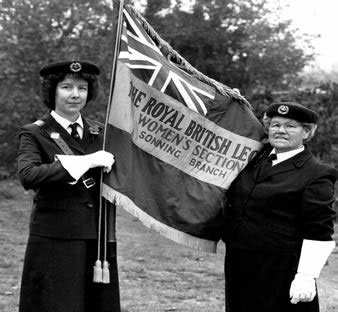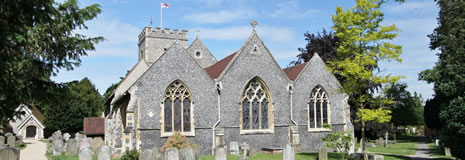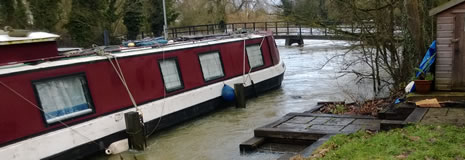The Royal British Legion
History of the Sonning Branch
Following the devastations and enormous loss of life and injury in World War 1, a voice was needed for the ex-service community. As a result, in 1921 following the merger of four organisations the British Legion was founded. The Legion was formed to help serving members of the armed forces, ex-service personnel and their families, now and for the rest of their lives.
The altruistic aims of the Legion affected the people of Sonning and on 4 February 1924 28 people attended a public meeting and unanimously agreed to form a branch.
Col Anderson was the first chairman and at the first meeting a membership sub of 2/6d was set — it has gone up since. The first function on 5 March 1924 was a smoking concert! Later, arrangements for Remembrance Sunday were agreed for 9 November 1924 and all committee members gave 3d towards the cost of a wreath. By the year end the branch had 41 members.
Social functions were a major part of the activities with profits going to the Poppy Appeal. Until the late 1990s whist drives, dances, garden parties and an annual dinner were held. Many of the dinners were in the White Hart (Great House) and in 1973 132 members and their friends attended.
The social activities were always strongly supported, and often run by, the women‘s section that was formed in 1928. Unfortunately this was disbanded in 1999 and their standard laid up in St Andrew‘s Church. The ladies had their own standard bearers and there is a tradition in one family of carrying it. Mrs Irene Nichols started the tradition, then Mary Jane her daughter and now Penny Adams her granddaughter. Both male and female bearers have been excellent and some have paraded at the Albert Hall.
Over the years the committee met in various venues including a hut in Woodley owned by the branch. Pubs were popular, the Bull in Sonning and the Bull & Chequers in Woodley, but the Sonning Club was the most frequently used, as it is to this day.
Visiting sick members was assiduously carried out by committee members when there was much faith and mention of whisky and rum as remedies!
In 1938, with the threat of war, discussion took place as to how the branch could help. Air raid precautions and warden training were reviewed, and gas masks were stored in the branch hut. In October 1939 some members were recalled and support for them was a high priority.
After the war social activities were strongly supported giving much to the Poppy Appeal. Details of funds raised were sketchy until in the 1970s when the amount grew from below £1,000 a year to over £15,000 in 2011 when Malcolm Geeter was the coordinator.
Also in the 70‘s support for the Somerset Legion Home in Weston Super Mare began. Money and goods were supplied for the Sonning Room in the home and local members have visited and stayed there. In 2004 a framed picture of Sonning Bridge was donated for the Sonning Room. Later a new home was built and the picture is still on prominent display.
Standard tradition: Mary Jane (left) with her mother Irene Nichols and the Legion‘s standard that is laid up in St Andrew’s The Remembrance Sunday service and parade have always been a vital part of its activities including, in earlier days, parading at Sonning in the morning and at St John‘s Church, Woodley in the afternoon. The route of the march has changed over the years but the enthusiasm for the parade and service has remained unabated by those who join Legion members such as the scouts, guides, brownies — who had a special role in the service — cubs, fire brigade, WRVS and the Reading Blue Coat School.
Providing a band was sometimes a problem until 1978 when the Reading Salvation Army began leading the parade and playing a prominent part in the service. In November 1981 the service and parade was televised by ITV.
St Andrew’s Church has always provided excellent support. Recently, Rev Jamie Taylor and the branch under the leadership of Col Gordon Barnett, organised magnificent celebrations for the 65th anniversary of VE Day and in June 2009 the D Day anniversary. The branch has always tried to commemorate the major anniversaries and 2014 will undoubtedly be a year to remember.
In 2001 the branch could not sustain a viable committee to meet National Charter legal requirements so it was agreed to become a sub-branch of Wargrave. This allows the branch to meet the main wishes of members, namely: to parade on Remembrance Sunday with its own standard and to collect for the annual Poppy Appeal in the name of Sonning. So the branch continues and currently has 62 members and the current Poppy Appeal coordinator, Daphne Payne, does a first class job.
The work of the Royal British Legion — it became Royal by charter in 1977 — is vital. Last year it dealt with 36,000 war disablement pension cases for veterans and 300,000 welfare and friendship visits. Some of that work is local, so the need is there just as it was in 1924 when the branch was founded. That need will remain. Your local Sonning sub-branch needs new members, especially younger ones. You need not be ex-service, so please sign up.
Our thanks to Colin Pierce and The Sonning Parish Magazine for permission to publish this article.


